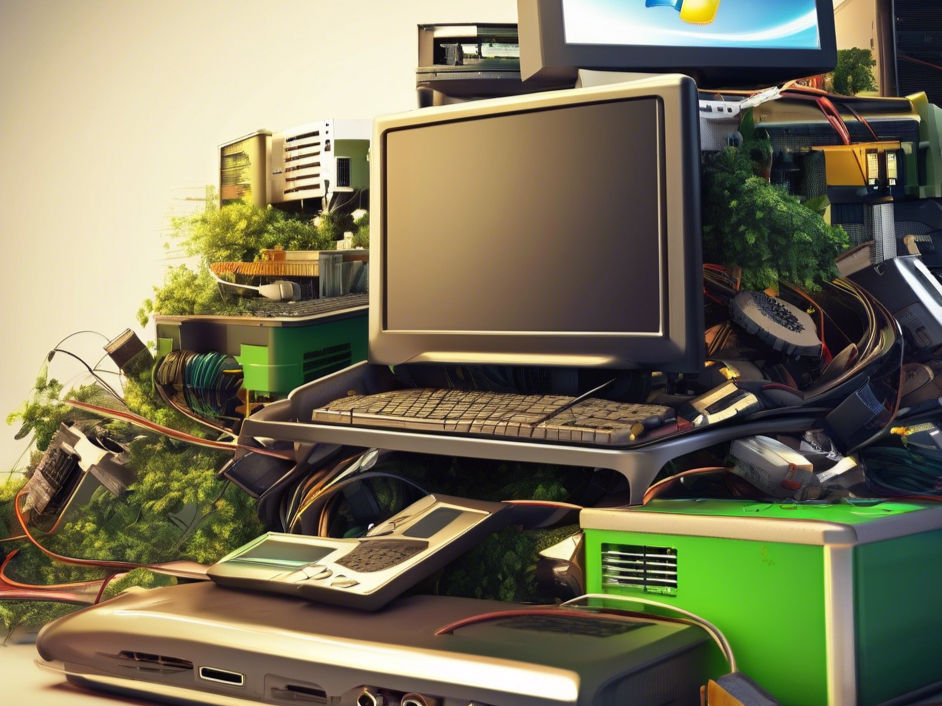The Hidden Costs of Improper E-Waste Disposal: How It Impacts Your Business and the Environment
- hfawaz
- Mar 14
- 2 min read

Electronic waste (e-waste) is piling up at an alarming rate. As businesses upgrade their technology and replace old devices, the question of what happens to outdated hardware becomes increasingly important. Improper disposal of e-waste doesn't just harm the environment—it also creates significant financial, legal, and reputational risks for businesses.
In this article, we’ll explore the hidden costs of improper e-waste disposal and why businesses need to take a proactive approach to recycling and secure IT asset disposition (ITAD).
🚨 1. Environmental Damage and Toxic Waste
Many electronic devices contain hazardous materials such as lead, mercury, cadmium, and brominated flame retardants. When these materials end up in landfills, they can:✅ Leach into the soil and water, contaminating local ecosystems✅ Release toxic fumes into the atmosphere when incinerated✅ Harm wildlife and pose health risks to nearby communities
According to the United Nations, over 50 million tons of e-waste are generated annually worldwide, but only 20% is properly recycled. The rest ends up in landfills or is improperly handled, leading to significant environmental damage.
💾 2. Data Security Risks
Improper disposal of IT assets can expose your business to data breaches. Hard drives, servers, and even memory cards often retain sensitive information even after files are deleted.
If e-waste falls into the wrong hands, sensitive data like:
Customer information
Financial records
Intellectual property
Employee records
…could be extracted and exploited, leading to financial loss and reputational damage.
💡 Secure data destruction through certified ITAD providers ensures that all data is completely wiped or destroyed, minimizing this risk.
⚖️ 3. Legal and Regulatory Fines
Many regions have strict regulations governing e-waste disposal. For example, the Resource Conservation and Recovery Act (RCRA) in the U.S. regulates how hazardous electronic waste must be handled. Non-compliance can result in:
Hefty fines
Lawsuits
Loss of business licenses
Certified ITAD providers who follow standards like R2v3 and e-Stewards can help businesses stay compliant and avoid costly penalties.
💸 4. Financial Loss from Missed Recovery Value
E-waste isn't just a liability—it holds potential value. Many electronic components, including precious metals like gold, silver, and copper, can be recovered and reused. Proper IT asset recovery can help businesses:✅ Recover value from old equipment✅ Reduce the cost of new hardware acquisitions✅ Improve sustainability goals
🌍 5. Reputational Damage
Today’s consumers and investors are increasingly focused on sustainability. Improper e-waste disposal can lead to negative press and erode customer trust. On the other hand, a well-managed recycling program demonstrates environmental responsibility, boosting brand image and customer loyalty.
✅ How to Protect Your Business and the Environment
To mitigate these risks and unlock the hidden value in e-waste, businesses should:✅ Partner with certified ITAD providers✅ Follow secure data destruction protocols✅ Ensure compliance with environmental and data security regulations✅ Educate employees on proper e-waste disposal practices
🚀 Conclusion
Improper e-waste disposal isn’t just an environmental issue—it’s a business risk. By working with certified recyclers and adopting responsible IT asset management practices, businesses can protect sensitive data, recover value from old equipment, and demonstrate their commitment to sustainability.
Don’t let e-waste pile up—act now to secure your business and protect the planet. 🌱




Comments